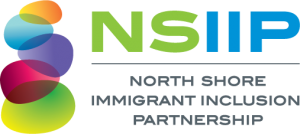For better navigation, drag the map or use the zoom (+/-) controls or the mouse scroll. You can also collapse the legend box located on the top left.
North Shore Students: English Language Learners (ELL)
Between 2017 and 2018, a total of 22,871 students (permanent residents, Canadian citizens, international students, and other temporary residents) were enrolled in North Shore schools. Of these students, 15,558 were enrolled in SD 44 North Vancouver, and 7,313 attended schools in SD 45 West Vancouver.
SD 44 North Vancouver:
- 942 students were found to be English Language Learners (ELL), representing 6.1% of the student body
- Among both ELL and non-ELL students, the top three non-English languages spoken at home were Persian, Korean, and Tagalog
SD 45 West Vancouver:
- 1,175 were recorded as ELL students, representing 16% of the West Vancouver student population
- Among both ELL and non-ELL students, the top three non-English languages spoken at home were Mandarin, Persian, and Korean
The map was constructed using the most recent information from BC Government’s K-12 Data Collections. It provides an at-a-glance view of the percentage (%) of English Language Learner (ELL) students by corresponding the figures to the relative size of geolocation points of each school.
Hover over the districts to see:
- Total enrollment (including permanent residents, Canadian citizens, international students, and other temporary residents)
- Number of English Language Learner (ELL) students
- Percentage (%) of ELL students in relation to the student population
- Top 10 non-English languages spoken at home for both ELL and non-ELL students
Hover over the schools to see:
- Number of English Language Learner (ELL) students
- Percentage (%) of ELL students in relation to the student population
- Non-English languages spoken at home for both ELL and non-ELL students, where the student headcount for the category is greater than 5
Note: We are currently seeking clarifications from BC Government’s K-12 Reporting Group on whether ‘Persian’ is synonymous with ‘Farsi’, or whether it includes additional languages and dialects such as Dari (Afghan Persian) and Tajiki (Tajikistan Persian). Similarly, please note that ‘Chinese’, ‘Mandarin’, and ‘Cantonese’ categories were selected by individual schools and there may be overlaps in the resulting student headcounts.
Copyright ©2019 NSIIP.ca. All rights reserved.


